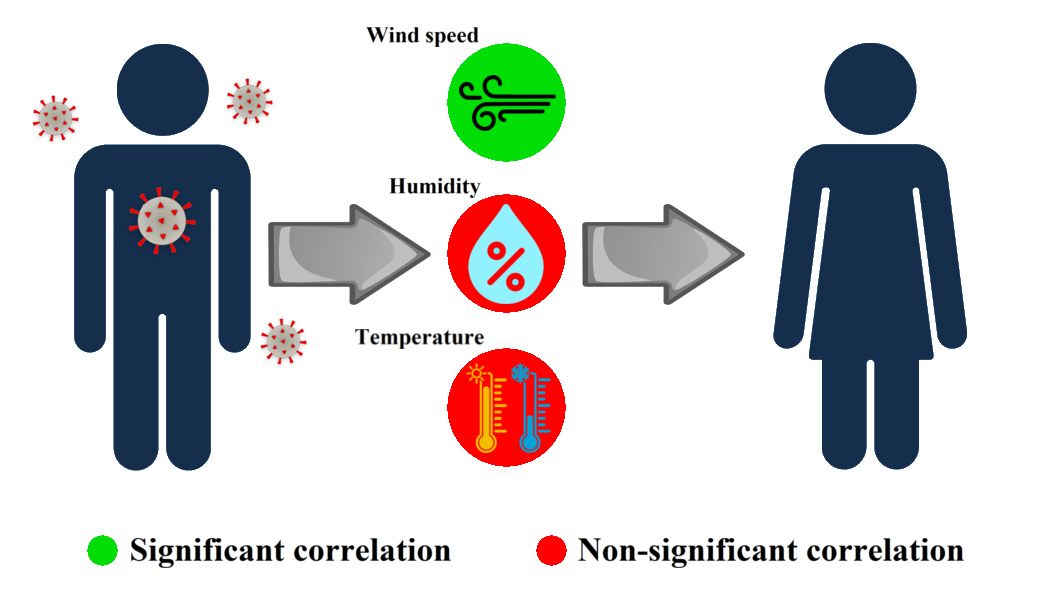COVID-19, caused by SARS-CoV-2, is responsible for widespread mortality and economic loss across almost 212 countries. The distribution of disease prevalence is, however, uneven and likely dependent on the range of human behavior and/or the pathogen and environmental variables. Here in this research we examined the correlation between daily and total COVID-19 case reports from Bangladesh and meteorological variables (average temperature, average humidity, and average wind speed) against one another using Spearman rank and Kendall correlation tests to highlight significant meteorological variables in relation to COVID-19. The tests revealed that both temperature and humidity had a non-significant correlation with COVID-19 transmission amid epicenter (EC) and non-epicenter (NEC) areas. However, a weak (KCC: 0.168, p < 0.05; SCC: 0.271, p < 0.05) correlation was found for temperature in ECs. Wind speed showed moderate to strong correlation in ECs with a very high statistical significance to both daily new cases [(KCC: 0.494, p < 0.01); (SCC: 0.689, p < 0.01)] and total cases [(KCC: 0.426, p < 0.01); (SCC: 0.617, p < 0.01)]. The COVID-19 transmission was found to have a weak (KCC: 0.354, p < 0.01) to moderate (SCC: 0.465, p < 0.01) correlation with daily new cases; however, a moderate (KCC: 0.497, p < 0.01) to strong (SCC: 0.712, p < 0.01) correlation with total cases was found in NECs. The results suggest that temperature and humidity have little influence on COVID-19 transmission, but wind speed may have some influence. Countries should prioritize social engineering to modify human behavior in order to combat the spread of COVID-19 and future pandemics.

